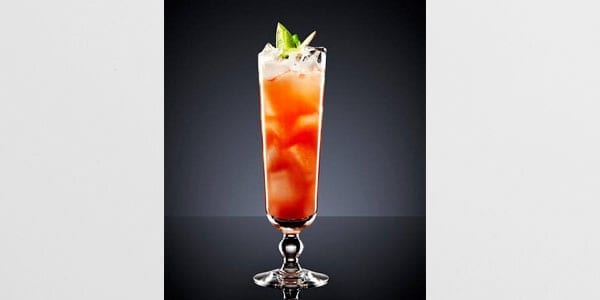
Writes: Juanjo Maillo Bartender
The origin of the word cocktail it has many stories behind it. The most widespread among books and bars dates from the XNUMXth and XNUMXth centuries. In those days drinks were decorated with a tail feather of a rooster and from there cock (rooster) and tail (line). In contrast, the most documented of the Cocktail comes from horse racing in United States. Horses that were not purebred had their tails cut off, so when they entered the race it was said that it was a 'cock tail '.
The first time the definition of the word is published cocktail is in a response from the publisher 'The Balance and Columbian Repostory' in 1806. It says that 'cocktail is a stimulating drink composed of spirits of any kind, sugar, water and bitters). So goes the story of the cocktails
Until recently it was believed that this was where the word first appeared, but in 2005 it was discovered in Vermont in a 1803 newspaper. Later in 2010 it was learned that the word was used on March 20, 1798, in the edition of The Morning Post Gazetter, a newspaper of London.
At present, the cocktail is defined as:
1. Drink composed of a liquor mix to which other ingredients are usually added.
2. Meeting or party where are they taken cocktails, generally in the afternoon.
3. Mix of diverse things.
For Bartenders, the definition of this word from the Cocktail expands. It is a mixture of different alcoholic ingredients (or not). These, combined with each other, are transformed and result in a new unique and different drink. But where the characteristics of each ingredient used should be found.
COMPOSITION OF A COCKTAIL COCKTAIL
When building a cocktail, be it a classic or one of your own creation, you must be clear about series of basics. These will help us understand the characteristics of this product from the Cocktail. It will also lead us to find a suitable balance for your enjoyment.
The parts that make up a cocktail are a basis, modifying agent or with a correction agent.
Base
Always represents more than 50% of the total volume (with very few exceptions), and can reach up to 75 or 90%. It is the skeleton and on this we will build the swallow. It is usually a spirit drink although it can also be a wine or liqueur.
In certain cocktails, la basis can be composed of two or more ingredients to add complexity to the mix. It has to be recognized in the end result.
Modifying Agent
It is an ingredient or a group of ingredients essential en Cocktail. Usually a liqueur, wine or juice. It is kept in the background and its function is complement the base, enhance it or soften it. In no case should it be hidden. Provides the character to the elaboration.
Without this ingredient next to basis, no matter how much it is shaken and cooled, the result will not be a cocktailbut just a chilled or watery spirit. The taste of modifying agent should never prevail over the basis, but it must always be present.
Corrective Agent
It can also be referred to as special flavoring or coloring agent. Are used to modify the color and provide some complementary aroma notes or added flavors. They serve to round and balance the drink. They are normally used in minimum quantities. In this group we add some liqueurs, cordials, fruit syrups, etc.
In general they can be divided into three classes
Aromatics: Fortified wines such as vermouths, bitters of various types such as Angostura, orange bitters, etc. are included. Also various aromatics such as Amer Picón or Fernet Branca.
· Fruit juice: orange, lemon, peach, apple or pineapple, with or without added sugar.
Softening agents: cream, eggs, etc.
Once you know the parts that make up a cocktail, it's time to analyze the classical that we know and at first rely on them when making our own creations.
Let's take as an example a classic, the Manhattan, to see the parts that are used.
It consists of:
60ml Bourbon
40ml red vermouth
2 dashes of Angostura
El bourbon is the base, makes the skeleton of the cocktail and it will be the predominant one. The vermouth, which is the modifying agent, provides spicy and sweet notes that blend with the former. Finally the Angostura, correcting agent, enhances the bitter notes of vermouth. It also enhances the complexity of them with the spices that it has rounding the final mixture.






